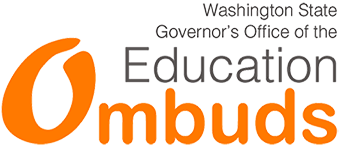Transition Services for Students with Disabilities (Ages 16-22)
Students receiving special education should begin to have a transition plan at age 16 or before. The transition plan becomes a part of the student’s Individualized Educational Plan (IEP) and is designed to help the student move from high school to life and career beyond its walls. These transition plans can look different in different districts because of community supports and opportunities. However, the transition services should be based on the individual student’s needs and strengths and include programs and supports that will foster the student’s independence after high school. Students have the right to an education and continued transition services until their 22nd birthday. Students with disabilities should be invited to be a part of this planning.
Understanding the Process for Implementing Transition Services:
Good transition plans are a partnership involving the student, family, school, community, employers, and others. Good transition plans are student-centered and use present needs to anticipate the best supports for future needs.
When should the team develop a transition plan?
No later than the IEP that is in effect when the student turns 16, or as early as age 14 if appropriate for the student.
What information is required to be in an IEP focused on transition?
Here are some of the basic components of an IEP:
- The student’s present levels of academic achievement and functional performance.
- Measurable annual goals. With transition, these goals need to be tied to the postsecondary plan.
- How the school district will measure the student’s progress towards meeting annual goals, including when and how often the school district will provide periodic progress reports.
- Specially designed instruction, related services, program modifications, supplementary aids and services, and staff supports.
- How much the student will be included in the general education classroom and with nondisabled peers in extracurricular and nonacademic activities.
- Approved accommodations for the student that will help with taking state and district assessments and measuring the student’s academic progress and achievement. If the IEP team decides that the student needs to take an alternate assessment instead of a general one, the team should also explain why they made that choice and why the alternate assessment is appropriate.
- Extended school year (ESY) services for the student, if the student shows regression or loss of information learned.
- The projected date for the beginning of the services and modifications described within the IEP, as well as the anticipated frequency, location, and duration of those services and modifications.
These components are part of IEPs, in general, but as the student progresses through high school, the student’s IEP should reflect the ongoing transition and identify the partnerships and resources that will support those goals.
The Importance of Planning in Transition IEPs:
In planning, the IEP team should focus on designing instructional programs and supports that meet the student’s interests and needs for life after high school. Student voice is critical. Having a strong start in the student’s teens forms a pattern of success that can make future transitions easier, such as employment, post-secondary education, and inclusion in the community. Effective transition services help the student identify and navigate future opportunities and challenges. Families, teachers, and community leaders offer different, valuable perspectives on how to ensure a successful transition. Transition provides a time for them to come together to send the student into the postsecondary world with good tools, strategies, and expectations.
What to Look for in a Transition Plan within an IEP:
Annual IEP Goals
Annual goals are what the team expects the student to accomplish reasonably within the next year. Goals should be observable and measurable. As the student gets older, the team should tie these goals increasingly to the student’s exit from high school and the postsecondary goals.
Measurable Postsecondary Goals
Like the IEP goals that the student has, the postsecondary goals in the transition plan must be based on assessments (formal and informal) to determine the student’s needs, strengths, and interests. There is no one-size-fits-all transition plan. The goals, like other IEP goals, should be data-driven and responsive to the progress that the student is making and new needs that arise. The team needs to revisit them annually or earlier, as appropriate.
Transition Services
The team should base transition services on an evaluation of the student’s needs and the student’s readiness. The team then tries to determine which programs and services will support the student toward reaching greater independence and their vision of success for the future. Teams should not base services on what is available only, but also need to consider the student’s needs. Meeting the student’s needs and goals might involve bringing in new community partners or coordinating activities between schools and community agencies to move successfully from school to postsecondary living.
Course of Study
A course of study is a current description of coursework and/or activities to achieve the student's desired post- secondary goals, from the student's current IEP through the student’s anticipated graduation or exit year.
Agency Collaboration
Transition services are results-oriented partnerships. Schools often collaborate with the Developmental Disabilities Administration (https://www.dshs.wa.gov/dda), local Developmental Disabilities Divisions, the Division of Vocational Rehabilitation (https://www.dshs.wa.gov/dvr), colleges and universities, and other community agencies.
Resources:
- OEO’s website Education Topic - Supports for Students with Disabilities:
- The Office of Superintendent of Public Instruction (OSPI) also has resources for families:
- For dispute resolution options, look at:
- For data about students with disabilities and transition in Washington, see the Center for Change in Transition Services:
